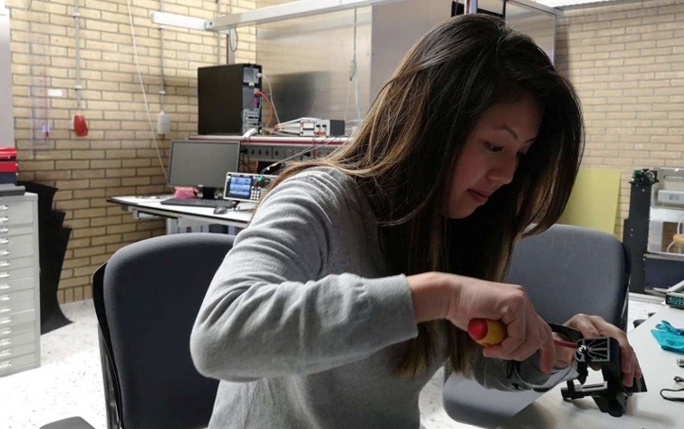Towards online beam monitoring in medical beam lines

Last month from 21st – 25th January 2019, OMA Fellow Jacinta Yap spent a week on secondment at Amsterdam Scientific Instruments (ASI) and Nikhef in Amsterdam, Netherlands. Usually based at the Cockcroft Institute / University of Liverpool in the UK, the secondment provided Jacinta a pleasant change of scenery with the opportunity to explore the detector related research, development and commercial environment - and the snow!
Jacinta spent her time at the Science Park and institute, the sites of ASI and Nikhef which are located on the same campus grounds as the University of Amsterdam. ASI is a company which specialises in the development and supply of high performing imaging products based on CERN Timepix/Medipix technology. Jacinta gained some insight into ASI’s processes and workflow, from the detector hardware and software development side of things to technical work in the labs for testing, troubleshooting and design. She appreciated the experience to see and learn whilst working alongside Navrit Bal, OMA Fellow based at ASI/Nikhef who also directed most of the week’s schedule.
At Nikhef, the objective was to discover more about the detector technology itself: chip specifications, technical capabilities, readout framework and further applications. Over the week Jacinta interacted with many people at Nikhef, particularly several researchers involved with the development of Timepix and Medipix, as well as the LHCb collaboration (VELOpix). Demos and mini experiments in the labs were given to demonstrate how the chips worked, their data acquisition and dedicated features. As her project utilises the LHCb VELO silicon strip detectors for proton beam monitoring, discussions about VELO were of particular interest and a collaboration member provided a nice overview of VELO, VELOpix, the simulation framework – Allpix^2 – as well as Nikhef’s ongoing involvement. Jacinta was also shown around some of the cleanrooms and workshops where they are currently manufacturing components for the upgraded VELOpix modules.
Lastly, the secondment was the perfect opportunity for more detailed discussions, planning and lab work, as Jacinta and Navrit are doing collaborative work with the Clatterbridge Cancer Centre, UK. They were able to finalise their plans, equipment designs and preparations for their fast approaching experimental measurements.